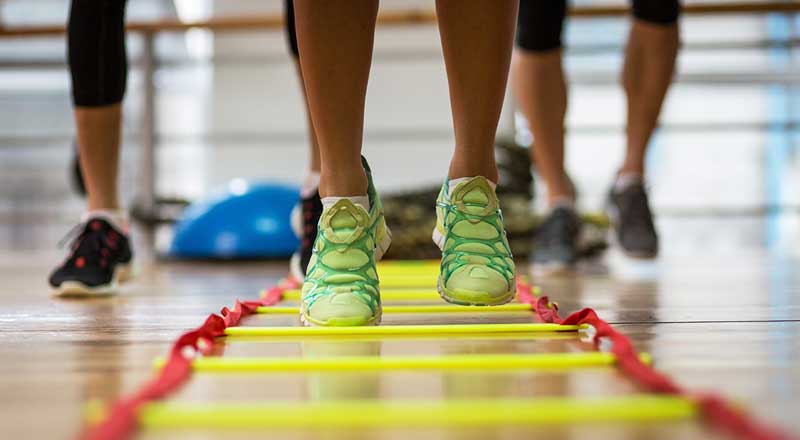When it comes to exercise and making healthy lifestyle choices, every client is unique, with varying levels of skills and motivation. Understanding your clients’ motivations and attitudes about exercise can help you tailor your communications and expectations to accommodate each individual’s needs. Learn how to identify the four common client types and how you can use this information to create more relevant and engaging personal-training experiences.
As health and fitness professionals, it’s important to remember the reasons clients seek out our services. More often than not, they’ve reached a point in their lives where they realize they really NEED exercise to improve their health, but they’ve always found it confusing, stressful and non-intuitive.
We are the pros they turn to in order to alleviate these burdens. When we don’t communicate appropriately with our clients, our knowledge and fervor for the “sweaty arts” can quickly worsen our clients’ symptoms of exercise apprehension.
We all have aspects of our lives that excite and interest us. These tend to be the things we naturally excel at and, therefore, are drawn to. We also have things in life for which we have little to no interest or talent, but still have to do them for one reason or another. In these cases, we tend to want to do as little as possible.
When we can better understand how our individual clients feel about exercise, we can improve how we communicate motivation, expectations and even information. With improved communication, fitness programs become more relevant, effective and engaging for those with whom we work.
In my 15-plus years of working with individuals and groups, I’ve discovered there is a powerful relationship between interest level and natural ability as it pertains to clients and physical fitness. Tailoring my communications and, in turn, the client experience to this relationship has helped my clients consistently achieve results, while my personal-training business has grown exponentially.
Here are four of the most significant relationships I’ve discovered between clients’ abilities and interest in exercise, and how I’ve modified my communications and expectations to accommodate each client’s unique needs. Consider which of your clients may fit these profiles and how you may be able to use this information to create more relevant and engaging personal-training experiences.
1. The High-motivation/High-ability Client

This is the “Type A” client who most likely has an athletic background. They live by numbers and thrive on a structured, well-planned program that provides constant feedback on progression. These clients often refer to exercise as “training,” and respond to nearly every piece of data they can get their hands on, so astute observations and feedback is important. These clients soak up every article, blog or piece of information you provide them, so go for it. They will hold you accountable for results, as they will usually do everything you recommend.
Frequent metrics and performance data collection are important for this group, as is a clear vision of long-term programming strategies. Short meetings (phone, email, in person) to discuss these things outside of training sessions are valuable for these clients.
2. The Low-motivation/High-ability Client
These clients are often naturally physically gifted and are only interested in doing what is necessary to achieve a particular outcome. A majority of these clients are athletes at a variety of levels (youth, amateur, professional, etc.).
These men and women are only interested in information or activities that directly impact their desired outcome. For example, trying to explain the physiology behind a training strategy will be lost in translation. Stick to statements like, “When you do “X”, your “X” will improve.”
Because these clients are training for a particular outcome, they often compare themselves to standouts in their field that have achieved the outcome they are aiming for. It’s important to understand this and use it to your advantage. For example, “[Insert name of the admired standout] does this every day!”
When providing feedback or information, remember to make it relevant to the specific outcomes the client desires. These clients respond to the notion of “training” or “working out.”
3. The High-motivation/Low-ability Client

A majority of personal-training clients fit this classification. They have learned to enjoy exercising with a health and fitness professional because, for most of their lives, physical activity proved to be an awkward, difficult experience.
In many cases, the goal with these clients is weight loss. It’s important to understand, however, that although they enjoy exercise, a regimented lifestyle outside of the exercise environment may not be realistic.
Considering their proclaimed goal (weight loss) and the unlikelihood for regimentation, it’s important to aid these clients in making general, “big picture” health and lifestyle steps in the right direction. While these men and women are not interested in doing things perfectly, they will, however, strive to do them better.
Your expectations and communication should take this in to account. These clients may not stop eating fast food, but they are willing to make better fast-food choices. They may not do at-home workout plans between training sessions, but they will go for a walk at some point during the day. Learn how to establish realistic lifestyle and daily habit goals that take small steps in the right direction.
High motivation/low ability clients respond to “big picture” information from consumer publications (articles in magazines, newspapers, etc.). Regardless of academic scrutiny, become familiar with these venues for information and use it to provide information and motivation for these clients.
While they are unlikely to experience drastic or radical traditional results (i.e., weight loss), effective communication will function to develop long-term, sustainable health habits. These clients enjoy “working out” and “exercising,” but the concept of “training” won’t really resonate.
4. The Low-motivation/Low-ability Client
These clients often seek a health and fitness professional when they are at the end of their “health rope.” They have been told they need help by medical professionals, family members, etc., and while they know this to be true, they may still be resistant.
The biggest hurdles for a majority of these clients are not physical, but rather are mental and emotional. Physical activity has often proven to be a difficult, even awkward venture for these men and women, and they have convinced themselves that it will always be this way. Their negative lifestyles have confined them to a closed mindset from which they believe there is little opportunity for change.
For these clients, your primary goal should be to gain their trust by listening and displaying empathy and compassion. Hardline expectations only function to intimidate, and information should be provided on a “when-questioned” basis. Merely overcoming their defeatist mindset to show up and exercise is their biggest victory and a tremendous result.
Focus on helping these clients understand how exercise makes them feel. Their blocked mindset doesn’t allow for the long term, so starting a workout with, “Let’s create some feel-good stuff!” and ending with, “So, how’s your energy now?” helps them establish a more immediate relationship between exercise and quality of life.
Avoid using the traditional terms “working out” or “training” with these men and women. Working out and training are what mean coaches and PE teachers made them do. You can “move” with them. You can “energize” them. You can “get the blood pumping.”
At the end of the day, it’s important to remember that we are all just like our clients in some other aspect of our lives. Learn how to assess each client’s relationship between his or her level of interest and natural ability with physical activity and you will help both you and your clients be happy and fulfilled for a lifetime.




 by
by 







 by
by